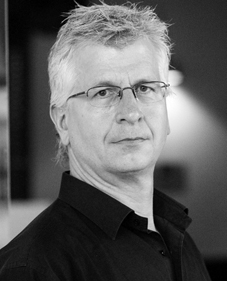Daniel K. Brown
PERSONAL STATEMENT
 Each of my works directly implicates architecture. The primary objective of my work is to address the expression of architectural narrative through designs that challenge the very nature of what architecture is. The largest of the installations redefine public urban sites as architectural interiors through the integration of fire, water, shadow and reflection as spatial definers. History and mythology become the inhabitants as well as the architectural program in the transformation. In the smaller works, even vessels of glass are challenged to act as architectural spaces or spatial definers, inhabited by mythology.
Each of my works directly implicates architecture. The primary objective of my work is to address the expression of architectural narrative through designs that challenge the very nature of what architecture is. The largest of the installations redefine public urban sites as architectural interiors through the integration of fire, water, shadow and reflection as spatial definers. History and mythology become the inhabitants as well as the architectural program in the transformation. In the smaller works, even vessels of glass are challenged to act as architectural spaces or spatial definers, inhabited by mythology.
The themes are selected from issues at the forefront of a site’s historical and mythological context, while the points of view represent critical perspectives drawn from the site’s cultural framework. The resulting narratives directly challenge our perception of our environment as well as its inhabitants.
In literature, poetry, music, dance, theatre and film, narrative enables unique points of view to be communicated across a time continuum, moving us through a range of transforming emotions, human responses and resulting levels of understanding. Architecture can be conceived as narrative when it, like literature and dance, invites the shifting of perception through time as we move through space. By challenging architecture to tell a story, the art of architecture becomes a compelling vehicle for imparting lessons of cultural understanding and translating cultural imperatives.
Architectural narrative is cross-disciplinary, simultaneously challenging and re-interpreting design theory from the perspective of linguistics, psychology, social and cultural theory. It challenges the fundamental objectives of three-dimensional design in terms of personal perception, transformation over time, social awareness, as well as cultural identity.
These works are conceived to push the boundaries of how architecture is traditionally defined, questioning its very nature and actively challenging presumptive definitions, prescriptions and limitations of the discipline. They enter the international public arena by transforming a site for a month or for just an evening – then returning to the presumptive state once more.
The largest of the sites has been a half kilometre length of river in the heart of Rome; the smallest an apothecary jar.
Photo Above © Robert Cross
